Order by 23rd Dec 5pm for Pre-Xmas Delivery
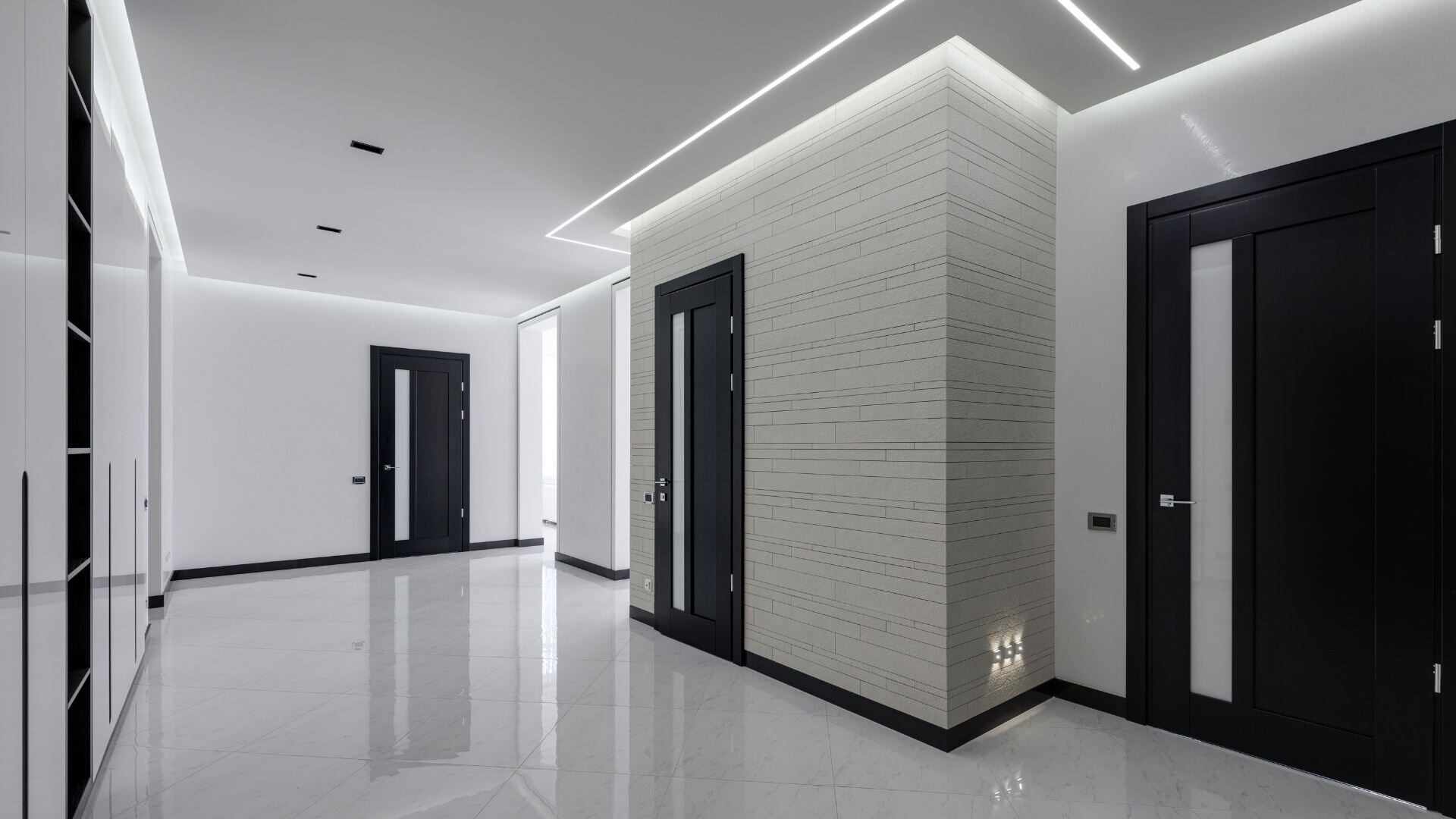
A Comprehensive Guide to LED Profiles
Using LED profiles is recommended for all professional LED strip installations. Acting as a structural casing, profiles protect the strip, manage heat, and help deliver a seamless, consistent finish.
This guide outlines the core types of LED profiles and how to choose the right option based on mounting requirements, visual goals, and application environment — whether it’s for recessed details, surface-mounted runs, suspended lighting, or integrated architectural features.
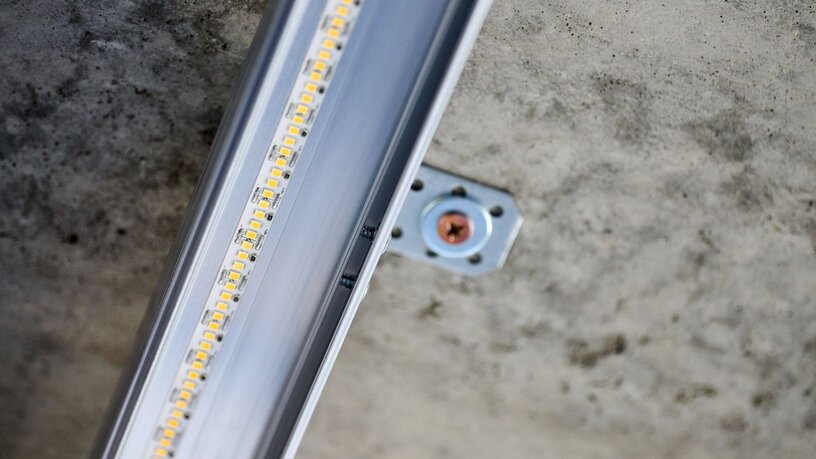
What are LED profiles?
LED profiles — also referred to as LED channels, aluminium extrusions, or housings — are purpose-built systems for mounting LED strip lights. They help diffuse the light, eliminate spotting, and ensure secure, long-lasting installations.
Key components of an LED profile include:
-
Aluminium channel – Holds the strip in place and provides heat dissipation.
-
Diffusers – Available in opal, black, clear, frosted or semi-clear finishes. Each affects light transmission differently.
-
End caps – Create a clean finish and protect internal components.
-
Mounting accessories – Clips, brackets, and suspension kits ensure stable installation across different surfaces.
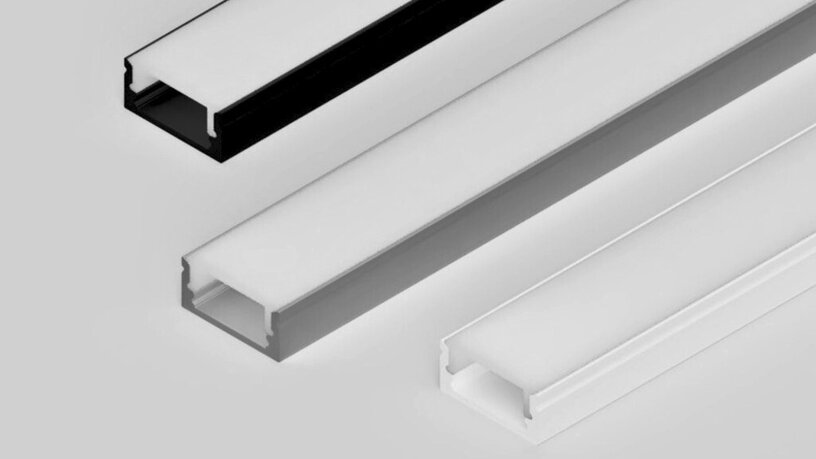
Why LED Profiles Matter
LED profiles offer a combination of protection, performance, and finish. They safeguard strip lighting from dust, knocks, and installation damage, while supporting thermal management to extend the strip’s lifespan.
Diffusers soften and shape the light, reducing glare and eliminating visible hotspots. This creates smoother, more even output — especially useful in commercial or camera-facing applications.
Visually, LED profiles elevate the overall finish. They hide raw strip lighting, providing a clean, integrated result that works with architectural details rather than against them.
While COB tape is a common choice for dot-free lighting, many Ultra LEDs profiles are designed to deliver the same effect using standard SMD tape — with the right diffuser and profile depth. This offers greater flexibility across applications while maintaining a clean finish.
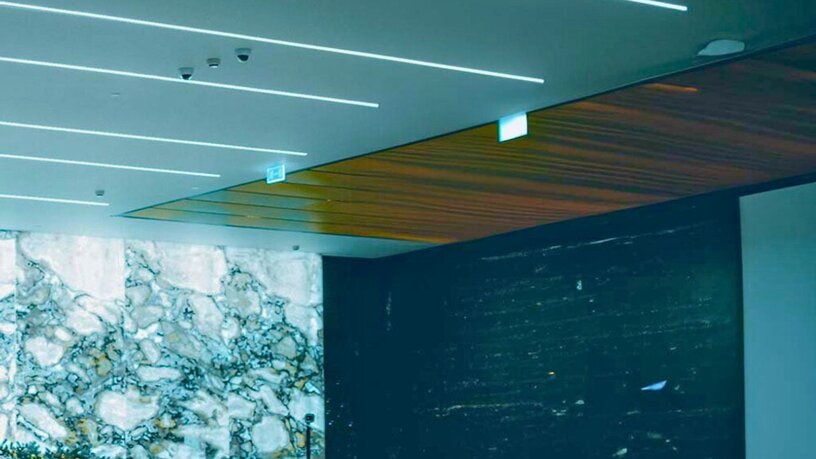
Key Factors To Consider When Choosing An LED Profile
Selecting the right LED profile involves weighing up installation conditions, light distribution, and final appearance.
Installation Type
Think about whether you're working on a new build or retrofit:
- New builds suit recessed and plaster-in profiles, which can be integrated early during construction.
- Retrofits often call for surface-mounted or corner profiles, which are easier to install onto existing structures.
Also consider where the profile is being mounted — ceiling, joinery, walls or shelving — as this affects size, orientation, and fixing method.
Recessed profiles offer a seamless finish but require cavity preparation. Surface-mounted profiles are easier to install and reposition. Suspended profiles allow for floating pendant-style lighting. Plaster-in profiles offer full integration into plasterboard walls or ceilings but need early planning and professional installation.
More complex installations might require routing, drilling, or plaster finishing — so it’s worth planning ahead.
Aesthetics
Profiles can be minimal or standout, depending on design intent:
- Slimline profiles are ideal where subtle lighting is required — in joinery or small spaces.
- Deeper profiles provide stronger diffusion and a more robust visual presence.
Finishes also matter. Anodised aluminium gives a technical look, matte black offers contrast in modern schemes, and white blends discreetly into light surfaces.
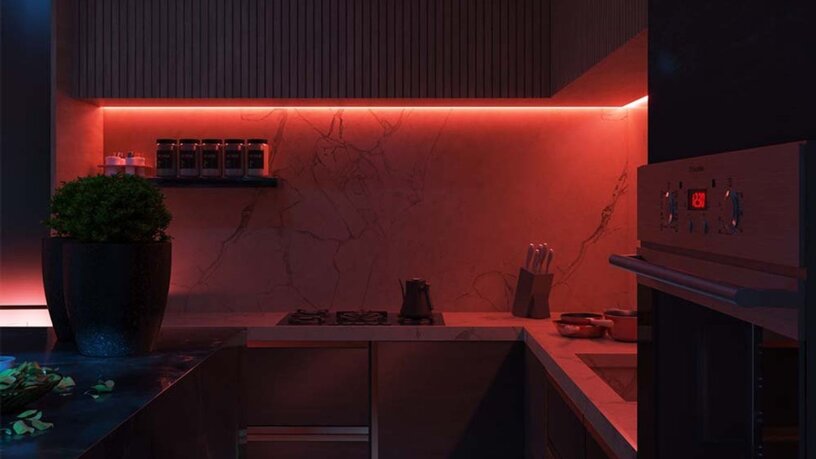
Functionality
Profile depth, shape, and diffuser type all affect light quality:
- Task lighting benefits from focused output with minimal glare.
- Accent lighting may require adjustable angles or directional effects.
- General lighting calls for broad, even distribution.
If a dot-free effect is important, you can either use COB tape or combine deeper profiles with semi-clear diffusers and standard SMD tape for a similar result.
For wet or dusty areas, look for profiles with a suitable IP rating. (Refer to our IP Rating Guide for more on this.)
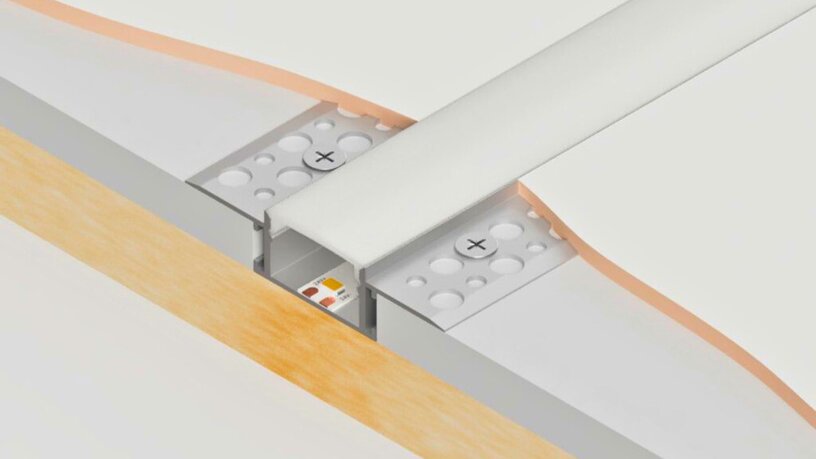
Choosing The Right LED Profile
Application requirements determine which profile type will deliver the best results for your installation:
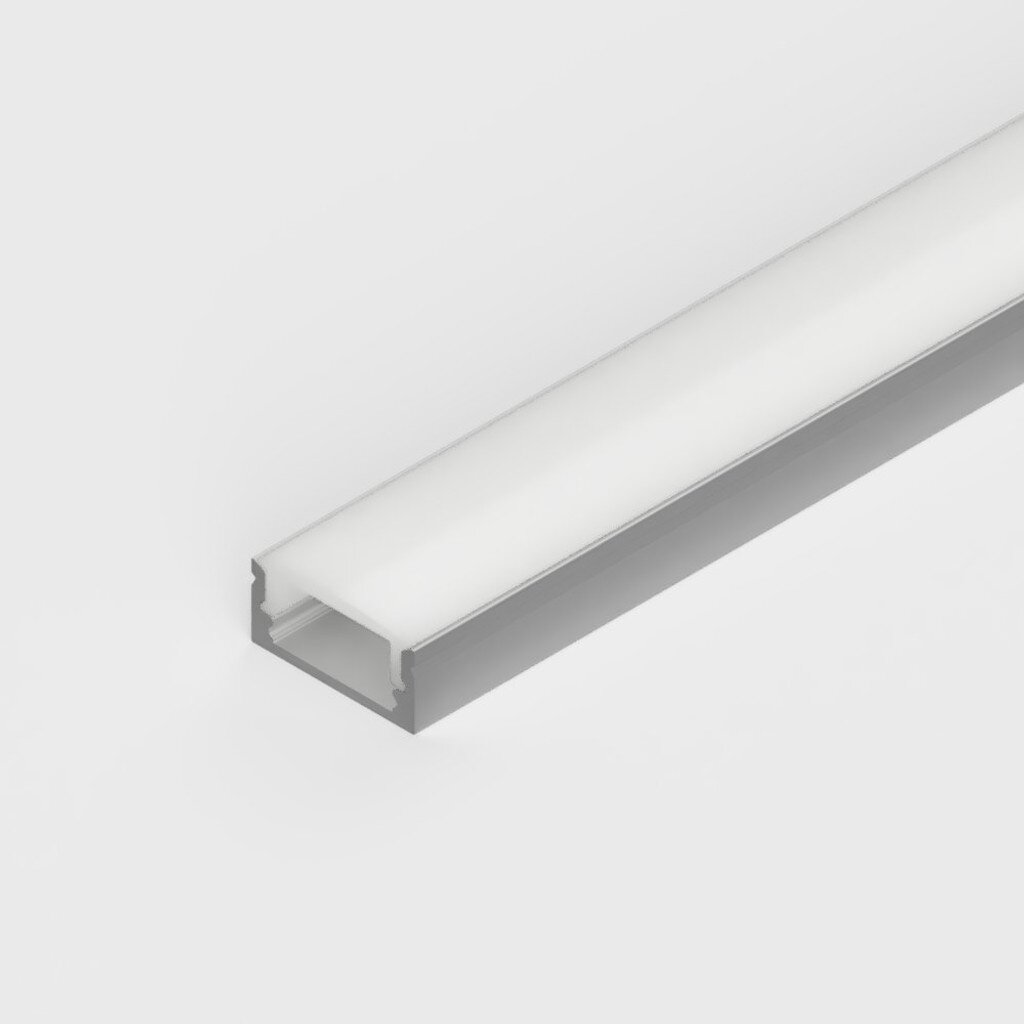
Surface-Mounted Profiles
- Ideal for under-cabinet lighting, shelving, wardrobes, or joinery
- Easy to install with mounting clips or brackets
- Wide range of depths and finishes available
- Slimline options offer low-profile integration
- Deeper versions improve diffusion and thermal performance
Browse here.

Recessed Profiles
- Best for ceiling troughs, display joinery, or detailed interior elements
- Sit flush within a routed channel or pre-built recess
- Deliver clean, shadow-free illumination
- Pair profile depth with diffuser type for dot-free results
- Ensure early cable access planning to avoid retrofit challenges
Browse here.
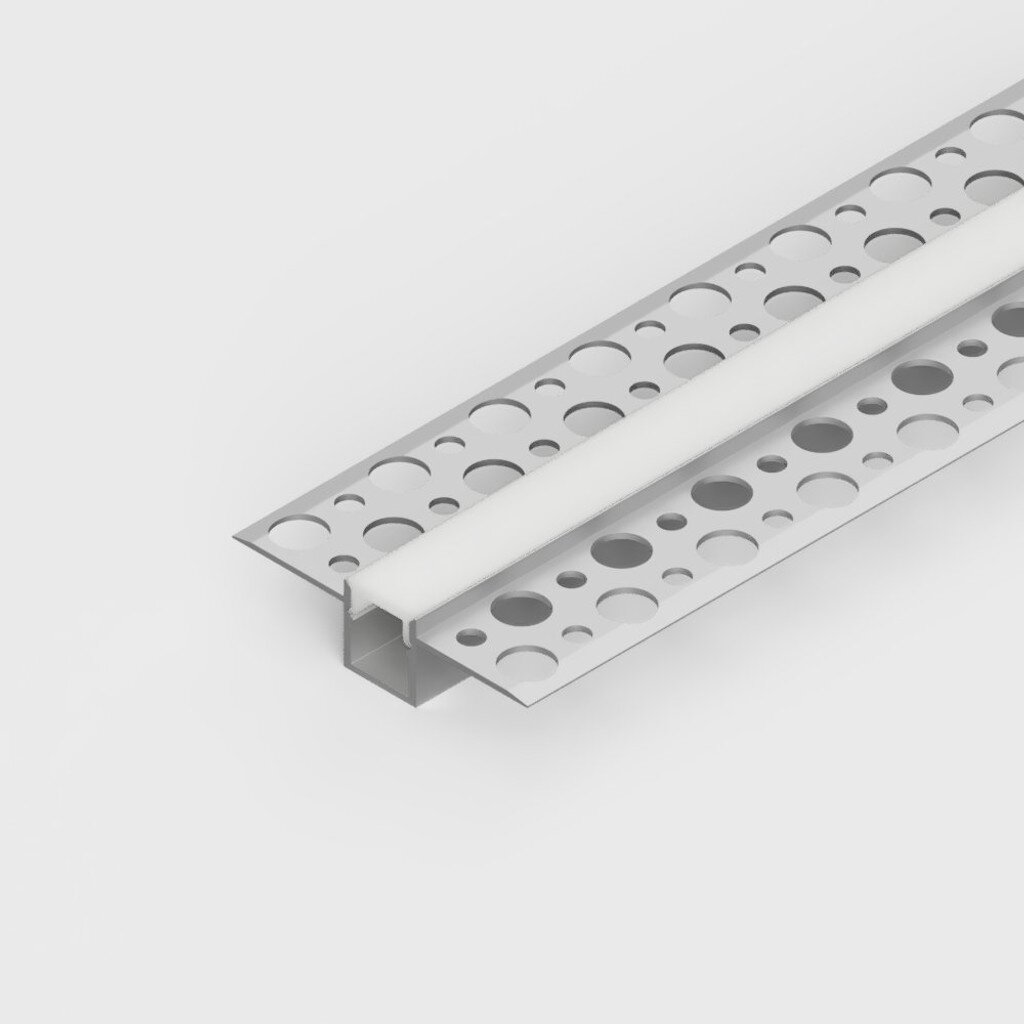
Plaster-In Profiles
- Built for plasterboard ceilings or walls
- Provide a fully integrated finish with edge-free illumination
- Ideal for minimalist, high-end schemes
- Installation must be coordinated with plasterboard fitout
- Suited to new builds or major renovations only
Browse here.
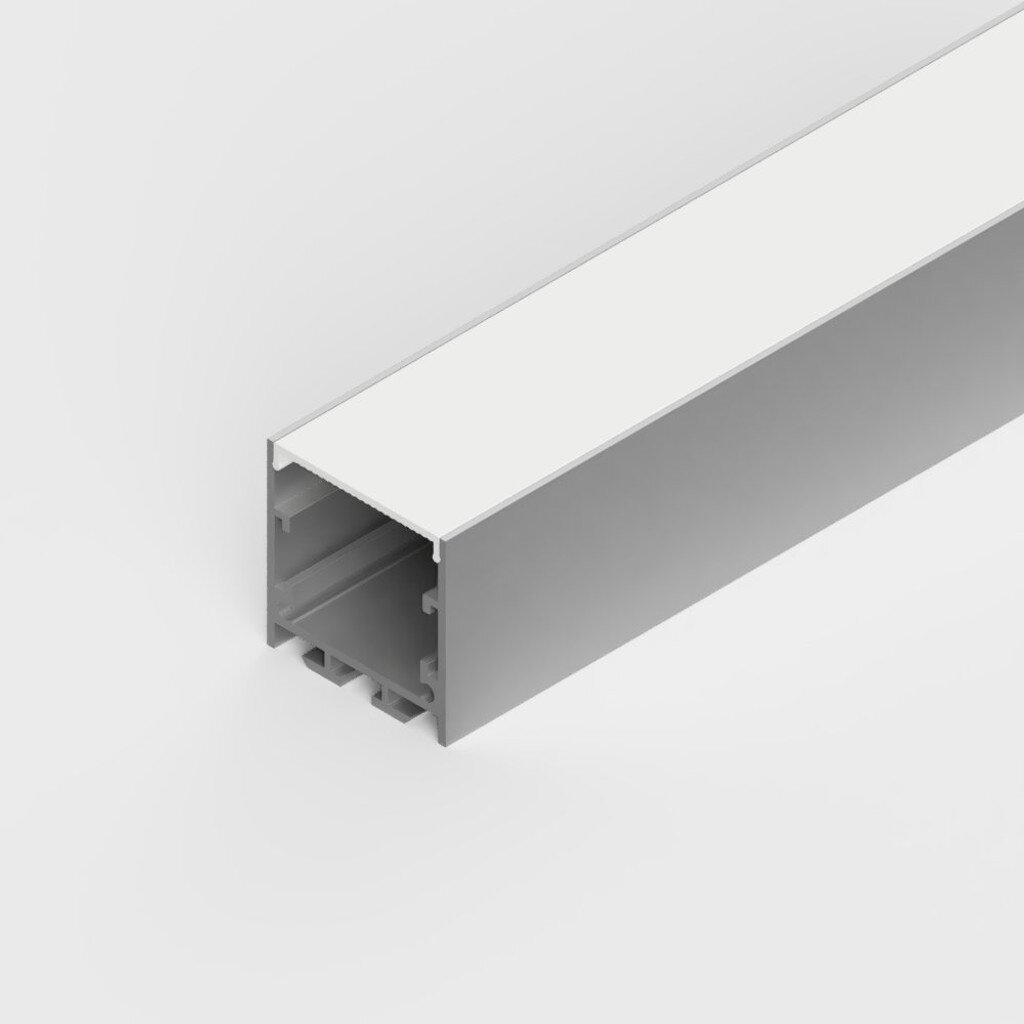
Suspended Profiles
- Suitable for open-plan or high-ceilinged commercial spaces
- Suspend using ceiling-mounted cable kits for floating pendant effects
- Allow precise positioning for functional or ambient lighting
- Perfect for retail, hospitality or workspace schemes with varying layouts
- Profiles like the 3535, 4040 TL and 3030 CIRC are all popular choices
Browse here.
Accessory Considerations
The right accessories make a big difference to both how an LED profile installation performs and how it looks when finished.
End caps create a clean finish at the ends of the profile and serve as the entry points for cables. They should match the LED profile’s finish for a professional appearance.
Diffusers play a key role in shaping the light quality. Black diffusers help evenly distribute light; opal diffusers maximise diffusion; clear diffusers maximise brightness; semi-clear balance both. Performance varies depending on profile depth and LED pitch.
Be aware that diffuser performance can vary significantly between different profile designs. Even when using the same opal diffuser, results can differ based on factors such as profile shape, depth, and LED spacing.
In most cases, a semi-clear diffuser gives the most reliable balance between light transmission and diffusion across different profiles.
Mounting clips keep the profile secure and properly aligned, while suspension kits prevent sagging or bowing, ensuring the installation remains stable over time. Depending on the profile design, some also include corner joints, T-connectors, and joining kits.
These accessories allow for flexible, custom configurations for easy installation.
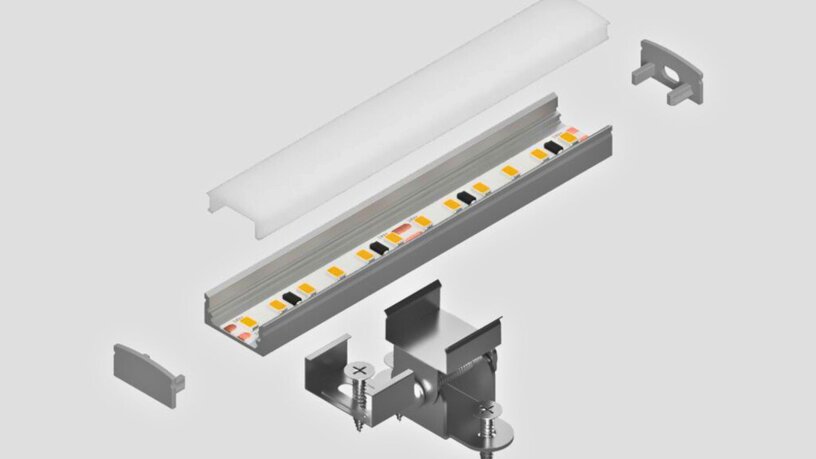
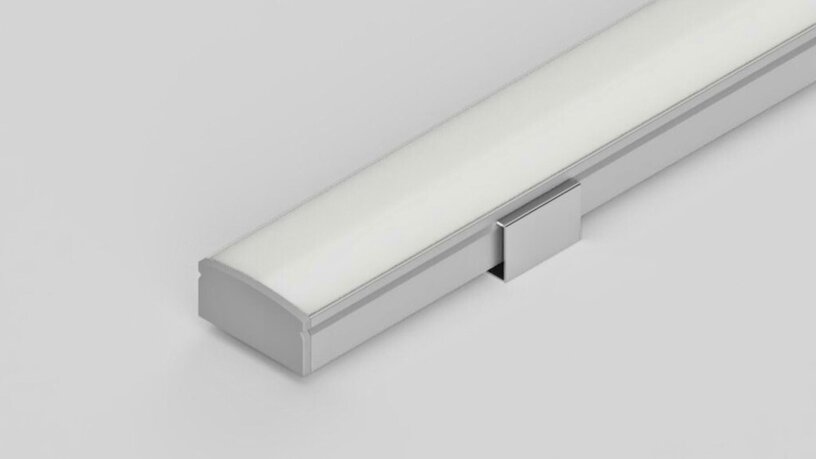
Fitting Tips
For optimal installation results:
- Plan cable routes early — especially with recessed or plaster-in profiles.
- Test combinations of strip, profile, and diffuser before committing.
- Match lengths between diffuser and profile — mismatches can create visible gaps or uneven output.
- Use COB tape where a seamless finish is essential.
- Consult Ultra LEDs — we can advise on the best setup for your project from the start.
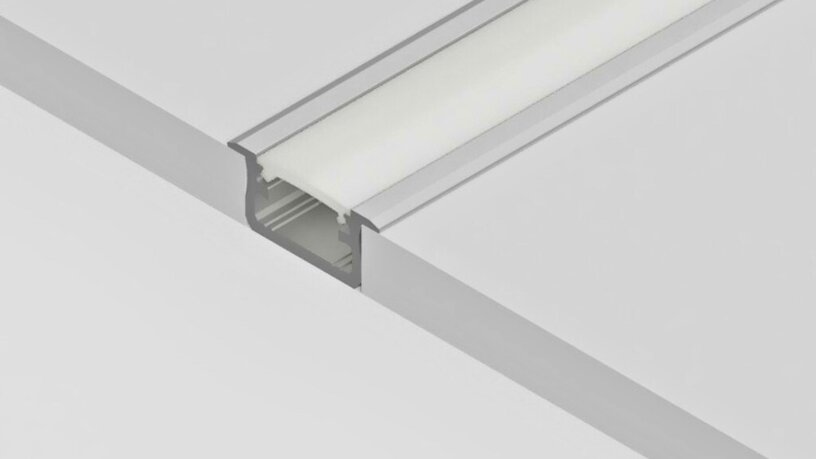
Application Examples
Our LED profiles have been used across a range of commercial and architectural projects:
- Waulk Mill, Manchester: 24V RGB profiles used to create a 15-metre spiral in a Grade II* atrium, balancing modern lighting with the site’s industrial architecture.
- Gym & Juice Club, Haverhill: Circular profiles used to follow exposed ceiling lines with RGB + Tunable White strips for flexible, low-glare lighting.
- Boom Battle Bar, Cambridge: 30mm suspended profiles with opal diffusers and RGB strips used throughout gaming zones and signage, all DMX controlled.
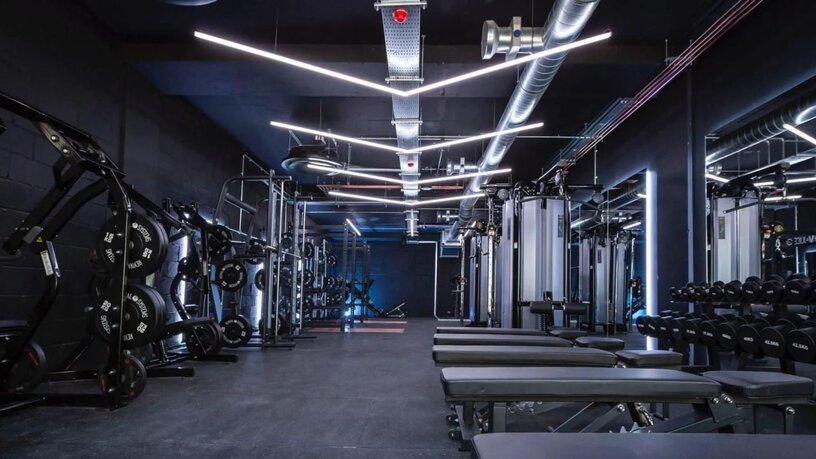
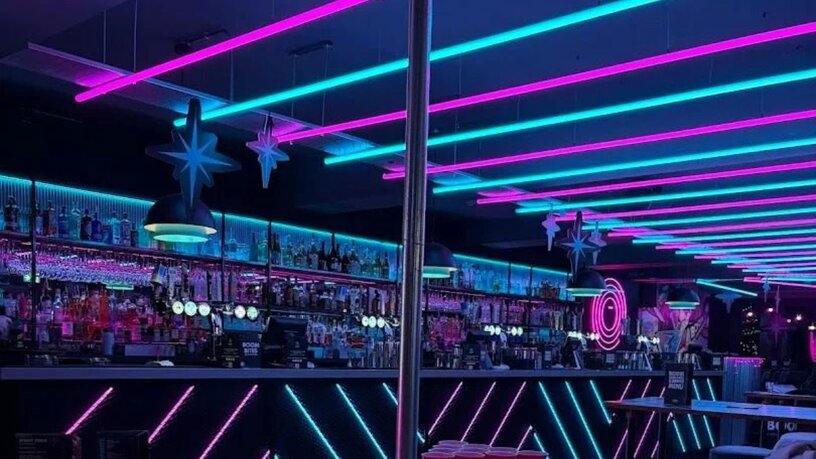
Summary
LED profiles are essential to any strip light installation. They protect the tape, manage heat, shape the beam, and provide a clean, professional finish.
Selecting the right type — surface-mounted, recessed, plaster-in, or suspended — depends on your application needs and installation environment. The intended lighting function (accent, task, general) will also guide your choice of depth, diffuser, and mounting method.
FAQs
Are LED Profiles Necessary?
Not strictly — but we strongly recommend them. Profiles improve LED strip longevity, manage heat more effectively, protect the strip from damage, and ensure a clean, professional finish.
Do I Need COB Tape for a Dot-Free Finish?
Not necessarily, as many of our LED profiles can achieve a dot-free effect using standard LED tape when combined with a suitable semi-clear diffuser.
Are Diffusers Interchangeable Across Profiles?
No – even if diffusers share the same name, the output can vary depending on the profile. It’s best to test combinations or get in touch with Ultra LEDs for tailored advice.
Ultra LEDs provides a full range of profiles, LED tapes, LED drivers, and LED strip accessories designed for reliable performance across various settings, including commercial, architectural, and hospitality environments. Our range ensures that each installation looks exceptional and performs to the highest standards.
For more information on LED profiles, consult our FAQ page or contact Ultra LEDs today. Our experienced team is on hand to offer expert support.
Get in touch with UltraLEDs today
Whether used as a sleek standalone fixture or configured for longer runs, Lyro is built for any project, offering the ultimate combination of flexibility, performance, and effortless installation.





